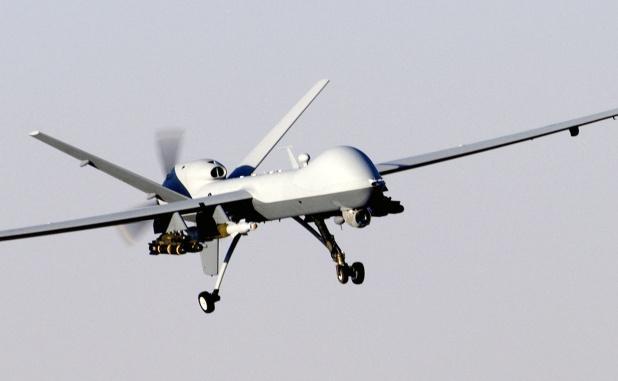U.S. Admits ‘Over the Horizon’ Afghanistan Strike Killed Civilians

The Pentagon maintains it will have an effective, over-the-horizon strike capability in Afghanistan following the drawdown, as it announced that an Aug. 29 MQ-9 strike in Kabul killed 10 civilians and not an ISIS-K target as originally stated.
U.S. Central Command boss Gen. Kenneth F. McKenzie said Sept. 17 that an extensive investigation determined that the white Toyota Corolla, targeted by one Hellfire missile, belonged to an aid worker who did not pose a threat to the U.S.-led evacuation at nearby Hamid Karzai International Airport.
“This strike was taken in the earnest belief that it would prevent an imminent threat to our forces and the evacuees at the airport, but it was a mistake,” McKenzie said.
The Aug. 29 strike took place shortly after a massive suicide bomb attack, attributed to ISIS-K, at the airport in the waning days of the U.S.-led airlift of evacuees. McKenzie said this strike took place after monitoring the target for eight hours, with as many as six MQ-9s watching the car.
U.S. forces at the airport had 60 different pieces of intelligence indicating an attack was imminent and that it would be connected to the compound where the car was located. Specific intelligence stated a white Corolla would be used, McKenzie said.
As opposed to previous airstrikes in Afghanistan, surveillance aircraft and ground forces had a limited period of time to develop the target, McKenzie said.
“We did not have the luxury of time to develop pattern of life and to do a number of other things,” McKenzie said. “We struck under the theory of reasonable certainty [of an attack].”
MQ-9 operators and analysts watched people on the ground load what they thought were explosives into the Corolla, but actually were jugs of water. Defense Department officials in announcing the strike said there was a large secondary explosion once the car was hit, an indication that it was full of explosives. Instead, the investigation found the secondary explosion was caused by a propane tank near the Corolla, McKenzie said.
The Aug. 29 airstrike was solely a U.S. operation from the air, without special operations troops direction and zero input from the Taliban, McKenzie said.
Despite the strike being considered a “mistake,” Defense Department officials say it should not reflect the continued “over the horizon” capability to surveil and strike ISIS-K or al Qaeda targets in Afghanistan without a U.S. presence on the ground.
“I would reject a parallel between this operation and other strikes against ISIS-K targets,” McKenzie said. “We will have the opportunity to further develop targets, develop a pattern of life.”
A separate airstrike on ISIS-K targets on Aug. 27 in remote Nangarhar Province was “very successful,” McKenzie said, though the Pentagon has not provided the names of those killed in the strike.
The U.S. government is now determining how to provide reparation payments to the remaining family members of those killed, though the process will be difficult without a presence on the ground, McKenzie said.
Defense Secretary Lloyd Austin said in a statement that he has directed a review into the investigation of the airstrike to determine which accountability measures need to be taken and how strike authorities should be changed in the future.
Caption: This illustration outlines the track a car took in Kabul on Aug. 29 before an MQ-9 targeted it. The Pentagon announced Sept. 17 that the strike only killed civilians.



